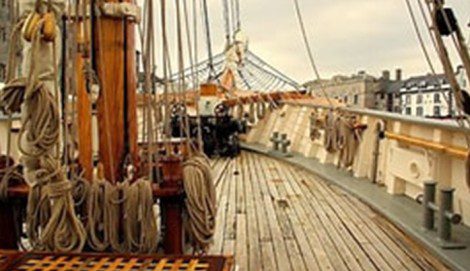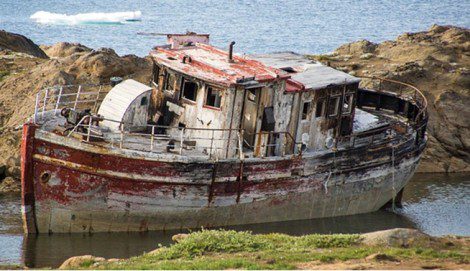 By Bob Currie, Recreational Boating Safety Specialist
By Bob Currie, Recreational Boating Safety Specialist
U. S. Coast Guard Auxiliary Station Galveston Flotilla
Most people have heard the terms “shipshape” and “seaworthy,” but there are obviously many boaters who do not understand the concepts of those terms. Sometimes when we go to the rescue of a recreational boat that is taking on water and in danger of sinking or just disabled and unable to return to port, we find that the boat should have never left the dock or ramp in the condition we found it. This column will serve to describe what we mean by those terms.
The Station Galveston Flotilla of the US Coast Guard Auxiliary operates out of the USCG Station Galveston base on Galveston Island. They aid the Coast Guard by providing maritime observation patrols in Galveston Bay; by providing recreational boating vessel safety checks; and by working alongside Coast Guard members in maritime accident investigation, small boat training, providing a safety zone, Aids to Navigation verification, in the galley, on the Coast Guard Drone Team and watch standing.

Shipshape
Note the neatly coiled lines, properly stored for ready use, and the deck free of hazards in the picture above. Shipshape means in good and seamanlike order with reference to the condition of the ship. The expression has its origin when Bristol was the major west coast port of Britain at a time when all its shipping was maintained in good order. Shipshape is actually a merger of two terms: ship-shape and Bristol fashion. Bristol is an inland harbor that, in the old days, was greatly affected by the tide. At low tide any ship in port rested on the bottom of the harbor. A ship had to be built enough to handle such grounding, and ships that could withstand the low tide were said to be built in Bristol fashion.
One of the things we vessel examiners look for whenever doing a vessel safety check is whether the boat is shipshape. We look at the overall boat condition including the following categories:
A. Deck free of hazards and clean bilge: The boat must be free from fire hazards, in good overall condition, with bilges relatively clean and visible hull structure generally sound. The use of automotive parts on boat engines is not acceptable. The engine horsepower must not exceed that shown on the capacity plate.
B. Electrical Systems: The electrical system must be protected by fuses or manual circuit breakers. Switches and fuse panels must be protected from rain or water spray. Wiring must be in good condition, properly installed and with no exposed areas or deteriorated insulation. Batteries must be secured and the positive terminal (some states require both) covered to prevent accidental arching. Boats with outboard engines are exempt from this requirement. If installed, self-circling or kill switch mechanism must be in proper working order. All PWCs require an operating self-circling or kill switch mechanism.
C. Fuel Systems: Portable fuel tanks (normally 7 gallon capacity or less) must be constructed of non-breakable material and free of corrosion and leaks. All vents must be capable of being closed. The tank must be secured and have a vapor-tight, leakproof cap, Each permanent fuel tank must be properly vented.
D. Galley and Heating Systems: System and fuel tanks must be properly secured with no flammable materials nearby.

Seaworthy
Seaworthy means that the ship us reasonably fit to encounter the “perils of the sea.” This is a legal term warranted by the shipowner. Seaworthiness is a relative term meaning the ship is fit to undertake the particular voyage, fit to carry the particular cargo, and it is operated by a crew reasonably adequate and competent for the work to which it is contracted. What this means is that you may have the best vessel in the world, but if the crew is incompetent then the vessel is not seaworthy. Before embarking on a particular voyage you must ascertain if the vessel itself is capable of handling the routine winds and seas as well as the winds and seas you are likely to encounter. My boat is a center console bay boat. I know it can routinely handle 1-2 foot seas (and the occasional higher swells) and light with the occasional moderate winds, but I also know that it is not designed for offshore use. It has low gunwales and a modified vee hull, and thus is fine for bay activities, but you need higher gunwales and a deep vee to handle offshore waves. Armed with this knowledge, you won’t find me past the end of the Galveston North Jetty. Past that point my boat’s seaworthiness is in question.
Fuel consumption rate and capacity are another component of seaworthiness. It is very important to determine the range of your vessel based on the load, the average fuel consumption rate, and your fuel capacity. Your range is not how far you can go on half a tank; instead, it is how far you can go on one third of your fuel. The recommended rule is to use one third of your fuel going out, one third for coming back in, and one third for reserve. If your average consumption is with three persons on board but on the next trip you will have four persons, then you must make adjustments to your estimated range. Don’t get caught short; we rescue too many people who have run out of fuel trying to stretch their range.
The crew makeup is another important component of seaworthiness. Just as the hull of my boat is not seaworthy for an offshore trip, all of my training is based on my inshore running experience. I don’t know the Gulf of Mexico past the North Jetty. I am happy working within my usual range of East Bay and West Bay, but I wouldn’t think of making a trip out to the near rigs with my lack of experience. I also wouldn’t think of going out with a captain who isn’t an experienced offshore boater. You must know the experience and capabilities of anyone aboard on whom you rely to help operate your boat. Your crew should have experience in the waters in which you intend to operate, they must be familiar with all operating equipment, and they must be in shape to handle some rough seas if such are encountered.
Summary
Shipshape and seaworthy are terms often bandied about with no regard to their meaning. In reality, before we push away from the dock we should make sure our boats are both shipshape and seaworthy, using the criteria listed in this article.
For more information on boating safety, please visit the Official Website of the U.S. Coast Guard’s Boating Safety Division at www.uscgboating.org. Questions about the US Coast Guard Auxiliary or our free Vessel Safety Check program may be directed to me at [email protected]. SAFE BOATING!
[August-24-2021]

 Posted in
Posted in 























